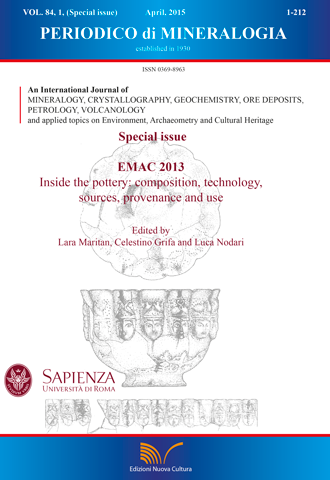Thin walled pottery from Alife (Northern Campania, Italy)
DOI:
https://doi.org/10.2451/2015PM0005Keywords:
Thin walled pottery, Alife, Volturno river clays, Grain Size analyses, levigationAbstract
The ancient town of Allifae (modern Alife) represents one of the most interesting settlements of the Northern Campania area and together with the ancient city of Cales, was a thriving production centre of pottery. Excavations carried out inside the city wall, near the south gate, the so called, Porta Fiume, unearthed a huge dump of thin-walled ware, where the most abundant forms were cups and beakers, decorated with grooves or rouletting. The dump has been dated late Augustan/Tiberian age and the thin-walled vessels found can be identified with similar wares from Allifae, Cubulteria, Caiatia and perhaps Neapolis. Horace in his Sermones (II, 8,39) cited the Allifana beakers (described as fictiles ac subtiles by a Horace scholiast) and they could possibly be identified with the thin-walled wares produced in Allifae. If this the case, then the thin-walled vessels produced in Allifae were known in Rome as early as the end of I century B.C. In order to investigate and characterize the Allifae thin-walled pottery, twenty-one samples were selected and mineralogical-petrographic analyses (OM, XRD, XRF and SEM/EDS) were carried out. The clayey raw material used was a low-CaO alluvial clayey deposit from the Middle Valley of the Volturno River. The potters probably handled the sediment by a levigation process in order to remove the coarser grains, and making the clay suitable to produce such thin walls. Comparison with other regional production of thin-walled pottery allowed us to strictly distinguish the Allifana beakers.


